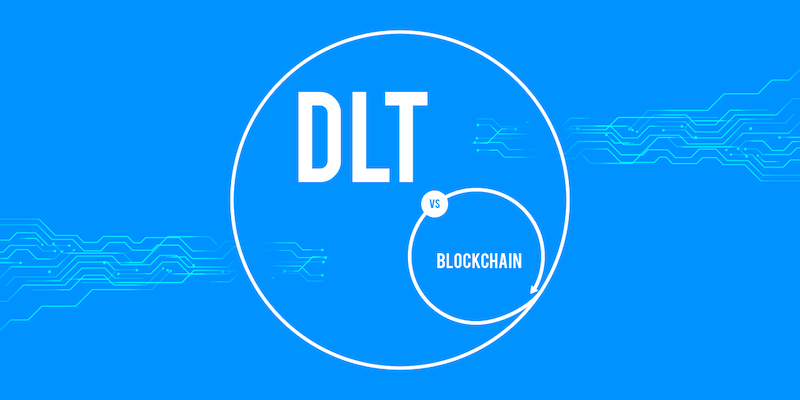What is DLT in blockchain? You’ve heard the buzz about blockchain, but peel the layers, and you’ll discover the engine inside: Distributed Ledger Technology (DLT). Like a detective, let’s crack this case wide open. With this guide, you’ll grasp the nuts and bolts of DLT, understand how it differs from blockchain, and see why it’s a game changer in digital transactions. No fluff, just the good stuff – let’s dive into DLT’s world and explore how it’s reshaping our digital landscape!
Deciphering DLT: Definitions and Distinctions
DLT Technology Explained
Let’s break down what DLT, or distributed ledger technology, really is. Imagine a book that many people can write in at once. Each person has a copy. When one person writes something new, all copies update with that change. That’s kind of like DLT. Every change is shared across a network instantly. This makes the book very hard to lie about or to destroy.
Think of DLT as a team sport. Everyone on the team knows the score and play. If someone tries to cheat, the whole team can see it. Now think of each player on the team as a computer in a DLT network. They all hold copies of data. They all agree on the rules. That’s what keeps DLT secure and trustworthy.
DLT is not only about money. It’s used in keeping health records, confirming who you are, and making sure items in the store came from where they said they did. This tech can help us in many parts of life.
Blockchain and DLT Differences
Many people think blockchain and DLT are the same. But there’s a twist. All blockchains are DLT, but not all DLT are blockchains. Confused? Let’s clear that up.
Blockchain is one type of DLT. Think of it as a special album of music hits. Just like an album has many songs, a blockchain has many blocks of data. These blocks link together in a chain.
Now, other DLT might not have blocks. They might organize data differently. But like blockchain, they share the data across many places.
Why do these differences matter, you ask? Well, different jobs need different tools. If you want to build a birdhouse, you pick a hammer, not a saw. It’s the same with DLT. We pick the type of DLT that fits the job we need to do. It could be blockchain for secure money things, or another DLT for tracking how goods move across the world.
To work fast and save money, some businesses use DLT that don’t need strong proof of who did what. Others, like banks, need strong proof. They might use blockchain instead.
By using DLT, we make sure things are fair. We let everyone involved see and agree on what is happening. This means less waiting, and less cost to check everything is right. And in finance, it means we trust more in where our money goes and how it gets there.
DLT makes our data safer, transactions smarter, and business better. It’s not just a tech thing. It’s about working together, keeping things open and honest, and building trust. Understanding this tech can help us all make better choices about our money, health, and the world we share.
How DLT Enhances Modern Transactions
DLT for Secure Transactions
Let’s talk about how DLT keeps your transactions safe. DLT stands for Distributed Ledger Technology. It means that instead of one place holding all the transaction data, many computers called nodes share and check it. This system is tougher to mess with because changing data on one computer won’t change it on all the others. This is key for secure transactions.
Imagine sending your friend money online. With DLT, this transaction is shared among many computers. They all agree on your transaction’s details. If someone tries to cheat, the other computers won’t match up. They’ll say, “Nope, that’s not right!” and keep your money safe. This safety net is a big deal for banks and anyone dealing with money online.
DLT vs Traditional Databases
Traditional databases have one big computer that keeps all the data. Think of it like a library with one main book holding all the info. If someone messes with that book, everything in it goes wrong. But DLT is like having many copies of the book across many libraries. If someone tries to change one, the others still have the correct stuff. This makes DLT special because it’s harder to mess up the data.
Using DLT means everyone can see the transactions happening. They aren’t hidden away. This openness builds trust and cuts down on sneaky business. Plus, DLT doesn’t have one boss computer. Instead, all the nodes work together as equals to keep things running smooth. This teamwork way of doing stuff is why many folks think DLT is better than old-school ways for keeping track of deals and money.
So, when people ask, “How does DLT work?” you can tell them it’s all about sharing to protect and trust. And when it comes to business, those are two things you seriously want on your side!
The Architecture of DLT Systems
Types of DLT Systems
Let’s get to know DLT systems like best friends. Just like friends can be different, so can DLT systems. There are blockchains, sure. But did you see the others? There are also things called DAGs and Holochains. Each type is neat for its own stuff.
Blockchains are the popular ones. They stack info in blocks. Imagine a tower of Legos. That’s blockchain for you. DAGs, or Directed Acyclic Graphs, are like webs. They spread out, not just up. It helps them move fast. Holochains are special. They let each user have a say. Everyone gets a voice.
When we ask, “How does DLT work?” Think of a group project. Every part helps. Every user has a copy of the info. It’s teamwork at its best. DLT lets everyone check and agree on data. Neat, right?
With different systems, we see different perks. Blockchains are good guards. They keep things safe and sound. DAGs are like sprinters. They go fast. Holochains are the team players. They bring everyone together.
DLT is not just about tech. It’s about making things fair and safe for us all. And that’s why learning about them is cool.
Consensus Mechanisms in DLT
How do these DLT systems agree on stuff? They use rules called “consensus mechanisms.” It’s like choosing where to eat with your family. Everyone has to say “yes” to the place. In DLT, it’s about saying “yes” to new info.
There are many ways to do this. “Proof of Work”, or PoW, makes computers solve hard puzzles. It’s like a race. The first to finish gets to add new info. But it takes a lot of power. Then there’s “Proof of Stake”, or PoS. It’s like a raffle. The more you own, the better your chances to add info. It uses less power.
Are there others? Oh, yes! “Delegated Proof of Stake”, or DPoS, lets people pick a few to do the work. It’s like voting for class president. They make the choices for all.
Consensus is key in DLT. It’s what makes it trustworthy. Because of it, everyone can feel safe about their data.
So, when we see “DLT for secure transactions,” think rules. It’s the rules that keep everyone honest. They make sure no funny business happens with our data.
DLT is not just tech talk. It changes how we save and share stuff—big time. With smart rules and teamwork, it makes a world where we can trust our clicks and swipes. Now that’s a future to look forward to!
DLT’s Role in Industry Transformation
DLT in Supply Chain Management
Think about how you buy stuff. How does it get to you? This is supply chain. Trick is, it’s huge and very complex. This is where DLT, or Distributed Ledger Technology, shines. In simple words, DLT lets different people add, keep or check records in a safe way. No one can alter these records without everyone else knowing. That’s dlt technology explained.
Now, picture all the steps to make and ship a product. DLT helps track each step. This makes sure things are honest and open. If there’s a problem, we can find it fast. Having this tech in supply chains changes how we trust what we buy.
Understanding dlt blockchain helps us see their teamwork. Think of blockchain as a special kind of DLT. All blocks in a chain are records that link together. DLT can be more open with other ways to share data.
So, dlt for secure transactions isn’t just a saying. It’s real. Every move in the supply chain is a transaction. And DLT keeps them safe. This means less bad surprises. Less bad surprises means happier customers. They know the road their stuff took to reach them. That’s a big win for everyone.
And think about the benefits of dlt in finance. Banks can use it to track money better. This makes things smoother and safer for us when handling money. DLT drops the guesswork and ups the trust. Plus, cash moves faster between banks. This is dlt in banking: less time, less stress.
DLT Platforms and Their Emerging Applications
Let’s dive into different kinds of dlt applications. These are called platforms. They’re the ground where DLT grows. There are many out there. They each have their own style, but work towards the same goal: to link info across people.
One big deal is smart contracts on dlt. These are like promises that the system enforces. If A happens, then B will follow, no ifs or buts. They cut out the middleman. This saves time and trouble.
Look at dlt for asset management. Before, tracking who owns what was a pain. DLT makes it clear and simple. It’s now tough to mess up the facts.
The dlt in digital identity verification is huge. In the past, proving who we are online was tough. Now, with DLT, your digital ID is safe and sound. Nobody can play pretend with your info.
For all the good stuff, dlt scalability challenges exist. Sometimes, a system can’t handle all the users. Plus, dlt interoperability issues mean different systems can’t always speak the same language. Good news is, smart folks are solving these puzzles daily.
Returning to dlt in supply chain management, remember, we can see every step of a product’s journey. Food from farm to table? Check. Medicine from lab to hospital? Check. DLT gives us the clear picture.
In a nutshell, DLT does a lot for us. It brings trust where it’s rare. It joins up steps to make the journey smooth. So, when we talk about dlt use cases, it’s not all talk. DLT changes the game — keeping things straight, safe, and slick.
In this post, we dug into what DLT is and how it’s not the same as blockchain. We saw how it makes transactions safe and beats old-time databases. We learned about the different types of DLT systems and how they agree on data. We also looked at how DLT changes the game in supply chains and other fields.
I think DLT is a big deal. It’s changing how we track and swap info, making everything more trusted and quick. Whether it’s keeping goods moving smoothly or ensuring data is right, DLT has a role to play. It’s a piece of tech that’s worth your time to know. Let’s keep our eyes on how it grows and shakes things up. It sure looks like it’s here to stay and get even better over time.
Q&A :
What Is DLT in Blockchain Technology?
Distributed Ledger Technology (DLT) is a digital system for recording the transaction of assets in which the transactions and their details are recorded in multiple places at the same time. Unlike traditional databases, DLTs like blockchain allow the storage of data across a network of nodes, which makes them less vulnerable to cyber attacks and unauthorized alterations.
How Does DLT Differ from Traditional Blockchain?
While blockchain is a type of DLT, not all DLTs are blockchains. Blockchain is a specific kind of DLT which organizes data into blocks that are chained together. Other types of DLTs may structure data differently and not necessarily in a chain of blocks. DLT refers to the broader category of distributed databases.
What Are the Key Advantages of DLT in Blockchain?
The key advantages of DLT in blockchain include increased security, transparency, and immutability. Transactions recorded on a blockchain DLT are encrypted and very difficult to tamper with. Every transaction is visible to participants, which enhances transparency. Also, once a transaction is recorded, it cannot be changed, ensuring immutability.
Are DLTs in Blockchain Public or Private?
DLTs in blockchain can be either public or private. Public blockchains allow anyone to participate and view transactions, like Bitcoin or Ethereum. In contrast, private blockchains, such as Hyperledger Fabric, control access and are typically used within organizations where privacy is a great concern.
How Is DLT Used in Blockchain Applications Today?
DLT is used in a variety of blockchain applications today, ranging from cryptocurrency and financial services to supply chain management and digital identity verification. The main use of DLT in these applications is to provide a reliable, verifiable, and secure way to record and store data across different industries and use cases.


